How to change the hose in a washing machine?
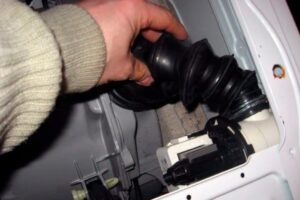 A worn out or clogged pipe can cause serious problems. The automatic machine will simply refuse to work normally - it will not be able to fill the tanks with water or, on the contrary, drain the waste liquid into the sewer. Typically, this situation ends with the equipment freezing and the corresponding fault code being displayed. You can replace the washing machine pipe yourself, without the help of a technician. To do this, you need to find out which hose is damaged. Let's figure out where the tubes are located and what functions they are responsible for.
A worn out or clogged pipe can cause serious problems. The automatic machine will simply refuse to work normally - it will not be able to fill the tanks with water or, on the contrary, drain the waste liquid into the sewer. Typically, this situation ends with the equipment freezing and the corresponding fault code being displayed. You can replace the washing machine pipe yourself, without the help of a technician. To do this, you need to find out which hose is damaged. Let's figure out where the tubes are located and what functions they are responsible for.
Where are the pipes located?
The design of modern washing machines is similar. Any machine, regardless of the brand, has filler and drain pipes, as well as a dispenser hose. Three pipes work harmoniously, ensuring water circulation in the system. Let's figure out what the function of each element is.
The filler pipe connects the inlet valve and the powder receiver of the automatic machine. Water passes through it very quickly, enters the cuvette, where it combines with the detergent. Afterwards, the soap liquid flows through the dispenser hose into the washing machine tank. When it becomes necessary to remove waste water from the tank, the drain pipe comes to the rescue. It is through this that the liquid flows into the sewer, passing further through a garbage filter and a drainage hose.
Any of the three pipes of the machine may become leaky or clogged, as a result of which the normal operation of the washing machine will be disrupted.
The new SMA models have very durable and elastic pipes. However, over time they begin to harden and may crack and leak.In the pipe connecting the detergent cuvette and the tank, plaque from poorly soluble powders can collect and settle. The granules quickly petrify, interfering with the free “movement” of water.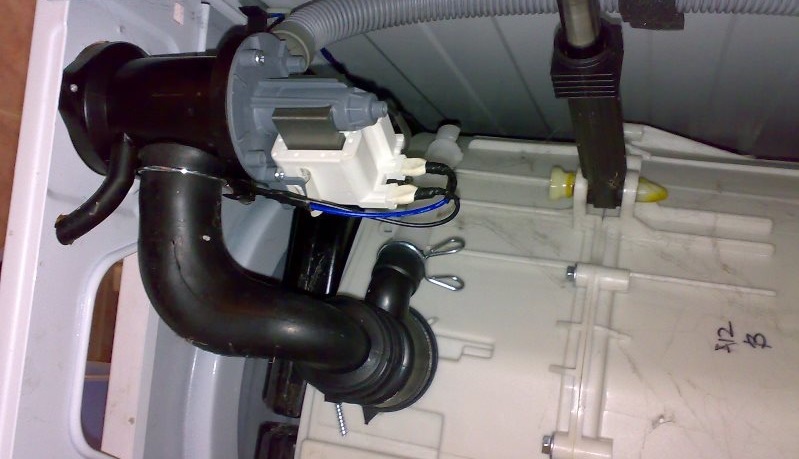
The drain pipe is the most vulnerable. It is in it that all the debris contained in the waste water is collected, and these are threads, hair, lint, sand, etc. Also, objects forgotten in clothing pockets can get stuck inside the hose: coins, keys, hairpins, toothpicks. Sometimes it becomes clogged with a sock that has fallen from the tank into the drainage system.
To understand which pipe needs to be changed, you need to monitor the operation of the washing machine. When water flows poorly into the tank or does not fill at all, you will have to inspect the inlet hose and dispenser tube. These same elements should be paid attention to if, immediately after starting the cycle, the machine begins to leak. You need to “sin” the drain pipe if the machine cannot remove waste water from the tank. You will also have to inspect it when a leak appears just after the drain starts. Let's figure out how to do the work with your own hands, where to start.
Turn off the machine and clean the filter
It doesn’t matter which pipe needs to be changed, in any case, you can’t do without disassembling the machine body. Before starting work, be sure to turn off the power to the washing machine and close the shut-off valve responsible for the water supply. It is also important to drain the remaining fluid from the system, to do this:
- prepare a shallow container;
- cover the floor around the machine with dry rags;
- get to the garbage filter. On front cameras it is located in the lower right corner. To gain access to the plug, you need to either remove the false panel or open the technical hatch, this depends on the model of the washing machine;

- tilt the machine back, place a basin under the housing in the area where the filter is located;
- unscrew the plug half a turn, collect the flowing water into a container;
- remove the spiral from the hole, wait until all the liquid has poured out.
Here it is better to immediately clean the filter, rinse it in warm soapy water, and remove dirt deposits from the walls of the hole. Now you can proceed directly to the repair. You can inspect the filler pipe and dispenser hose by removing the top cover of the housing. To check the drain tube, you will have to lay the machine on its side.
Dispenser pipe
Having noticed that clean water is collecting under the body of the machine, first of all you should inspect the dispenser pipe. To check the element, you need to remove the top cover of the washing machine body.
The dispenser pipe is located in the left corner; it connects the inlet valve and the powder receptacle.
It's quite difficult to miss the hose. It is secured on both sides with clamps. You can make sure that the dispenser pipe is working properly:
- Use pliers to loosen the clamps;
- slide the clamps to the center of the pipe. You need to work with clamps carefully; they will be useful for later securing the hose;
- first pull the tube off the inlet valve, then from the outlet of the detergent tray;
- inspect the pipe for cracks and make sure there are no blockages inside.
When everything is in order, all that remains is to rinse the dispenser hose under running warm water and put it back. It is advisable to clean it with a bottle brush. If you find cracks in the rubber, purchase a new pipe that matches the model of your washing machine. Secure the entire hose in place with clamps. The part will also have to be replaced if the previously soft tube has hardened and feels “oaky” to the touch.
Water supply pipe leaking
On some washing machine models, for example LG, it is easy to remove the water supply pipe. To do this, you need to remove the top cover, loosen the clamps and dismantle the hose. However, sometimes it is difficult to get to the handset; you have to remove the front panel of the machine. The algorithm of actions will be as follows:
- turn off the power to the machine;
- turn off the water supply tap;
- remove the top cover by unscrewing the screws securing it;
- pull out the powder receptacle;
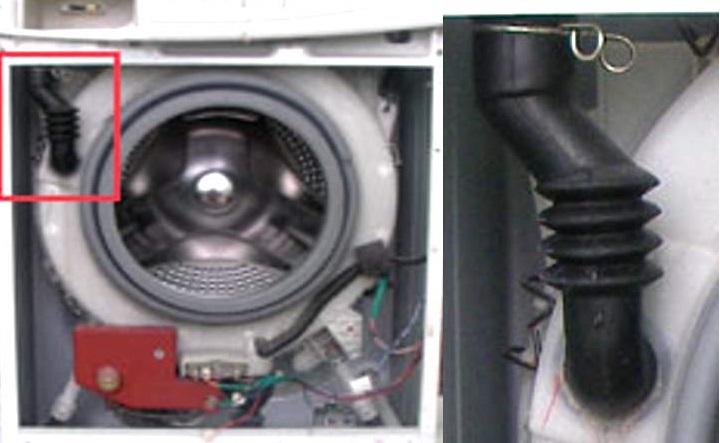
- unscrew the control panel fasteners;
- unhook the “tidy” and place it on top of the washing machine;
- remove the lower false panel by releasing the latches;
- pull out the outer collar of the hatch cuff. To do this, you need to use a screwdriver to pick up the latch and remove the “ring”;
- tuck the rubber seal inside the drum;
- unscrew the 2 bolts securing the hatch locking device;
- remove the front panel of the front camera housing.
The water supply hose runs from the dispenser to the tank. To remove the pipe:
- remove the fixing clamps located at both ends of the hose;
- Unhook the tube first from the cuvette exit, then from the tank.
Next, it remains to carefully inspect the element. If you notice damage, you will have to buy and install a new pipe. If the hose is clogged, clean it with a long, thin brush or simply replace the part.
Connections between tank and pump
Most often, washing machine owners are faced with the task of changing the drain pipe. This is a rather vulnerable part through which tens of liters of soapy, contaminated water pass with each wash. It's no wonder why the hose is the first to wear out.
The drain pipe through the bottom is being replaced, so you need to carefully lay the automatic machine on its side.
Some washing machines have an open bottom, so you can immediately notice the required tube only by placing the machine in a horizontal position. If the machine has a tray, you need to unscrew the screws and remove it. The drain pipe is connected to three elements at once: a tank, a pump and a pressure sampling hose.
To remove the pipe, you need to deal with the clamps at all three points and pull the hose to the side. Inspect the rubber corrugation - if it is intact, clean the part with a brush, rinse under running water and put it back in place. If you find cracks, replace the element immediately. If the old hose is intact but very dirty, soaking it in water for two hours with the addition of citric acid can help. For two liters of liquid you will need only 100 grams of lemon juice. After the procedure, the pipe must be rinsed under the tap and put back in place.
It is up to everyone to prevent clogging of pipes. It is better to immediately install a deep cleaning filter in front of the entrance to the machine - then water will flow into the system without any impurities. It is also important to purchase only high-quality detergents so that they dissolve completely and do not settle inside the hoses. You also need to inspect the pockets before loading things into the drum and do not forget about the need for preventative cleaning of the drain filter (once every six months).
Interesting:
1 reader comment
Add a comment Cancel reply
Categories
Washing machine repair


For buyers

For users

Dishwasher

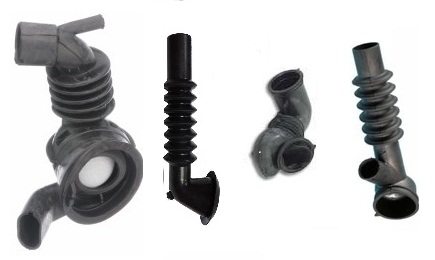
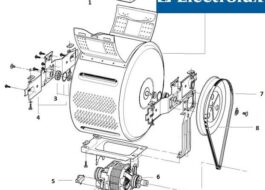



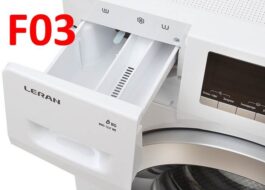










The LG washing machine washes but does not spin. Tries to spin the drum and stops. The pump is constantly running.Could this be due to the heating element?